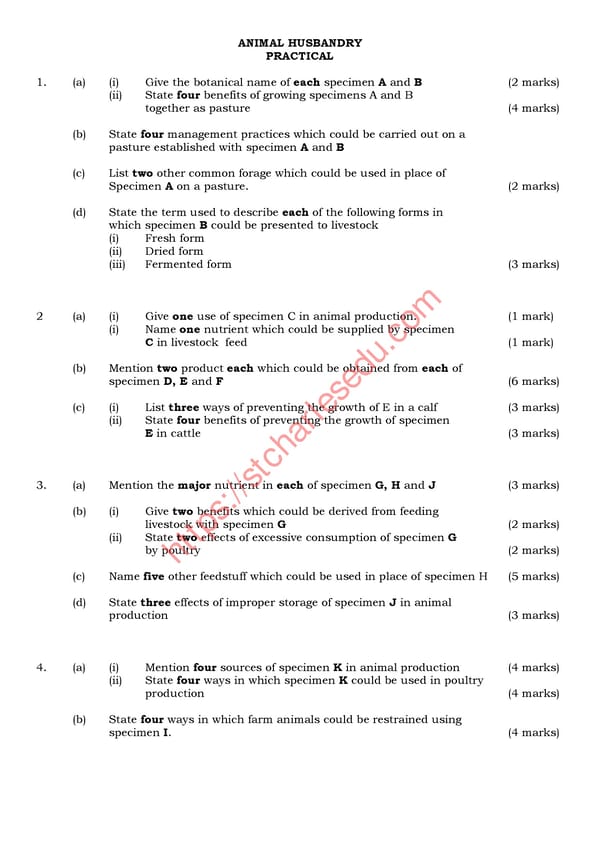ANIMAL HUSBANDRY PRACTICAL 1. (a) (i) Give the botanical name of each specimen A and B (2 marks) (ii) State four benefits of growing specimens A and B together as pasture (4 marks) (b) State four management practices which could be carried out on a pasture established with specimen A and B (c) List two other common forage which could be used in place of Specimen A on a pasture. (2 marks) (d) State the term used to describe each of the following forms in which specimen B could be presented to livestock (i) Fresh form (ii) Dried form (iii) Fermented form (3 marks) 2 (a) (i) Give one use of specimen C in animal production. (1 mark) (i) Name one nutrient which could be supplied by specimen C in livestock feed (1 mark) (b) Mention two product each which could be obtained from each of specimen D, E and F (6 marks) (c) (i) List three ways of preventing the growth of E in a calf (3 marks) (ii) State four benefits of preventing the growth of specimen E in cattle (3 marks) 3. (a) Mention the major nutrient in each of specimen G, H and J (3 marks) (b) (i) Give two benefits which could be derived from feeding livestock with specimen G (2 marks) (ii) State two effects of excessive consumption of specimen G by poultry (2 marks) https://stcharlesedu.com (c) Name five other feedstuff which could be used in place of specimen H (5 marks) (d) State three effects of improper storage of specimen J in animal production (3 marks) 4. (a) (i) Mention four sources of specimen K in animal production (4 marks) (ii) State four ways in which specimen K could be used in poultry production (4 marks) (b) State four ways in which farm animals could be restrained using specimen I. (4 marks)
 WAEC Animal Husbandry Practical Past Questions Page 7
WAEC Animal Husbandry Practical Past Questions Page 7